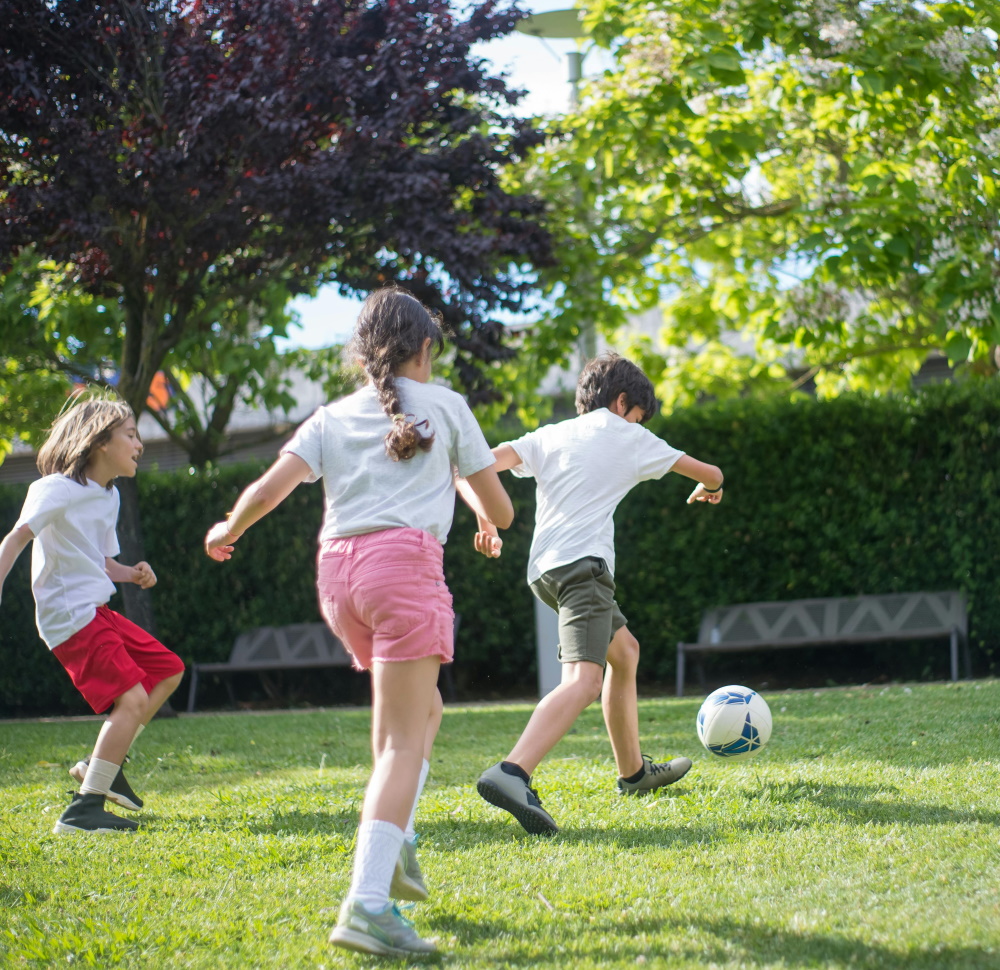Osteopathy and Children
Osteopaths are trained to work with patients in all age ranges. Osteopathic techniques offer a drug free and gentle approach that can help with many musculoskeletal aches and pains.
There are many reasons why you might wish to have your child checked out by an osteopath. Problems may arise because of poor posture, a minor sports injury or just the bumps, knocks and tensions that occur in everyday life. Children who experience aches or pains may benefit from osteopathy as there may be an underlying mechanical reason for their problem.
With children it is usually best to call and speak to one of the osteopaths prior to booking an appointment. We can then advise you on seeing your GP or health visitor if osteopathy is not appropriate.
We are always happy to talk to you about your specific pain or problem prior to booking an appointment, just call or email us and ask to speak to one of the osteopaths.
Top tips for school children
Children of any age may encounter musculoskeletal based pain.
Poor posture such as slumping during lessons or sitting hunched over the computer can lead to low back or neck and shoulder problems. Carrying heavy bags at school can put pressure on the discs between the vertebrae which can cause long term back pain in small and still-developing bodies and children can suffer muscular pain, headaches, tingling and numbness in the arms and legs. The British Osteopathic Association advise that children should never carry more than about 15% of their own body weight. Parents can help by packing their children’s rucksacks and making sure that the heavier items are nearer to the child’s back. Heavier items on the outside of the bag tend to throw the child’s centre of gravity out of balance, which leads to bad posture and increases the chances of them straining their back. The long term effects from carrying heavy bags include strains on the neck and shoulder leading to headaches, fatigue and an early development of poor posture along with strain to arms and wrists.
Tips on helping your child to avoid back pain
- A backpack is usually more comfortable than a bag that puts strain on only one shoulder, but even a backpack shouldn’t be overloaded.
- When buying a bag, buy a sturdy, well-designed bag with wide, padded shoulder straps that reduces pressure on the neck and shoulder area. Buy a bag with adjustable straps which can be altered as the child grows.
- Check your child’s posture after he has put the bag on. If you notice your child leaning forward or slouching, check if the bag is too heavy or if it has been packed incorrectly.
- Make sure your child is only carrying the items they need for school that day – remove any unnecessary books and equipment.
- Ask your school about provision of child lockers for storing equipment or books so that they can be left at school.
- When studying at home try to ensure that your child sits upright with their low back supported at a table rather than on a sofa or bed.
- Encourage your child to take regular breaks from the computer and get moving during breaks to boost circulation to help with muscle tension. your child grows try not to get into the habit of feeding them or carrying them on just one side. This will lead to lopsided postural changes. Consider trying a baby hip carrier, it can distribute the stresses of carrying your child across your pelvis.
Childhood foot problems
Foot health is extremely important. The foot shape and arches change enormously as your child grows, how your child stands, walks and runs will have a large impact on their knee, hip and low back health.
One major challenge to children’s foot health are the shoes they wear. Overuse of high heels, thin soled shoes, studded sports shoes or very flat pumps or even wellies can all contribute to problems.
Wearing high heels (anything over 2”) is especially stressful on the joints of the foot because the whole weight of the body is forced into a narrow, pointed area. Higher heels can contribute to knee and back problems because of the way wearers are forced to pay attention to their balance and to take shorter strides. Heels also force the thigh muscles to work harder, putting extra strain on the knee joints and tendon that runs from the kneecap to the thigh bone. (Compared with walking barefoot, high heels increase the pressure on the inside of the knee by around 26 percent and over time this increased pressure on the knee can lead to osteoarthritis).
Flat shoes are usually easier on your feet than heels, but with no shock absorbency and little heel support, there is a risk of developing a painful condition called plantar fasciitis (pain on the soles of your feet) and calcaneal bursitis (pain under your heel). Studded football or rugby boots are often a cause of heel pain in young boys. Flip flops can also lead to similar heel problems and force the toes to claw to keep the shoe on. Even wellington boots can be a problem as they generally are less supportive than needed. The key is not to always wear the same shoes and where possible always try to choose good quality well fitted shoes for growing feet.
We were recommended osteopathy to help our son as a baby, and it helped tremendously. 10 years later we have returned time and again for minor injuries and general aches/pains. Osteopathy has been our first port of call for minor injuries/sprains and strains. Bedale Osteopaths have all been so helpful and improved our quality of life.


